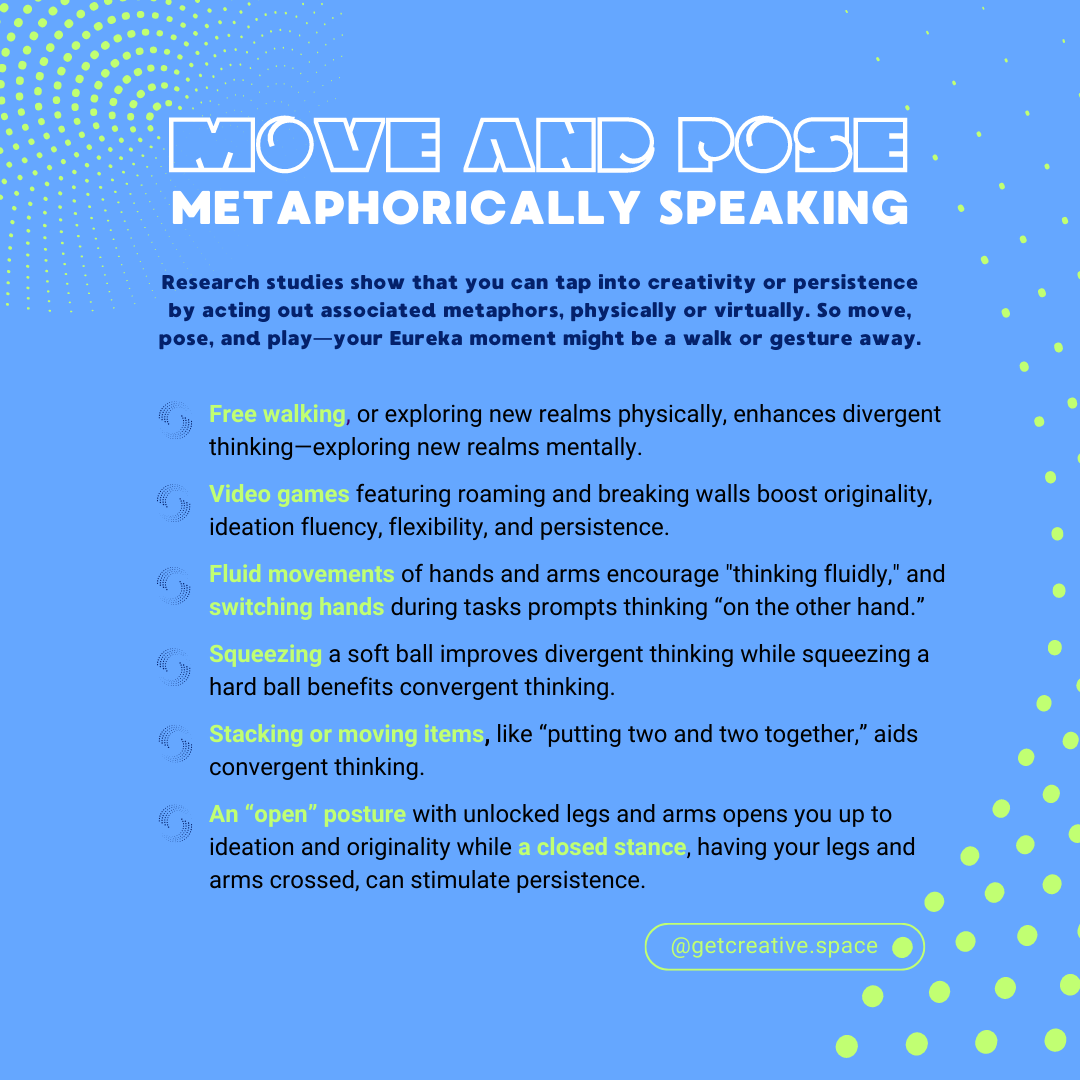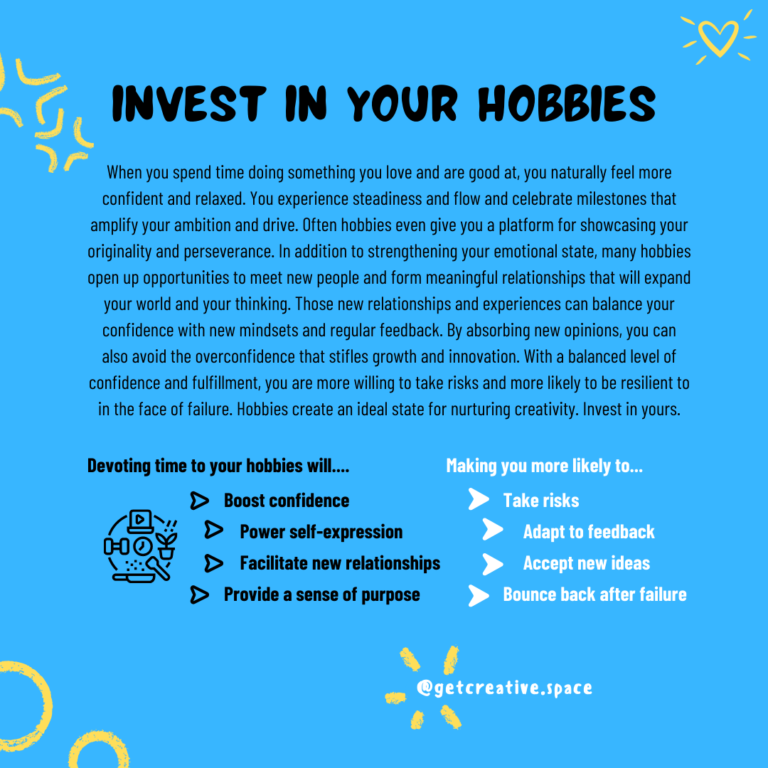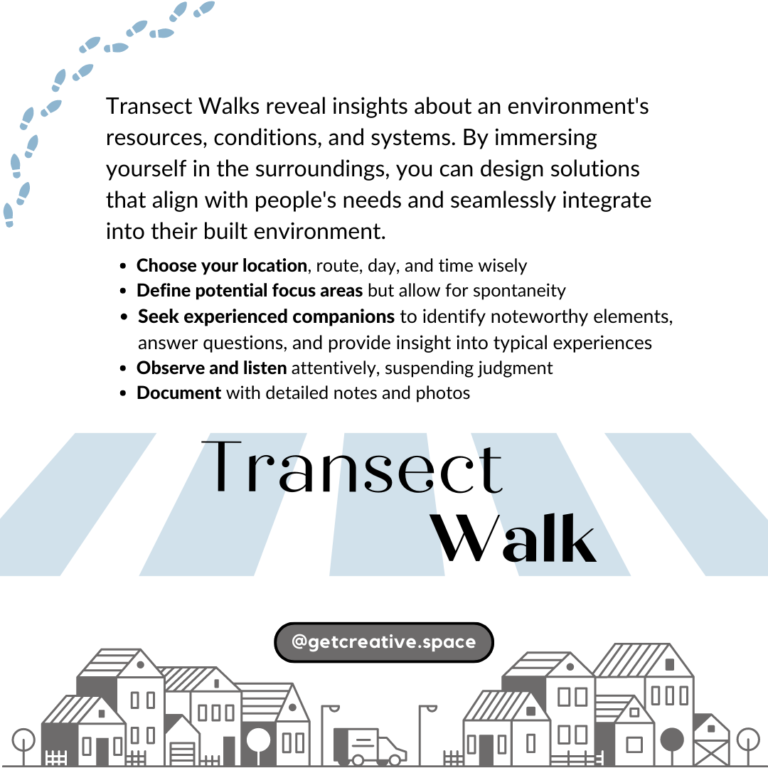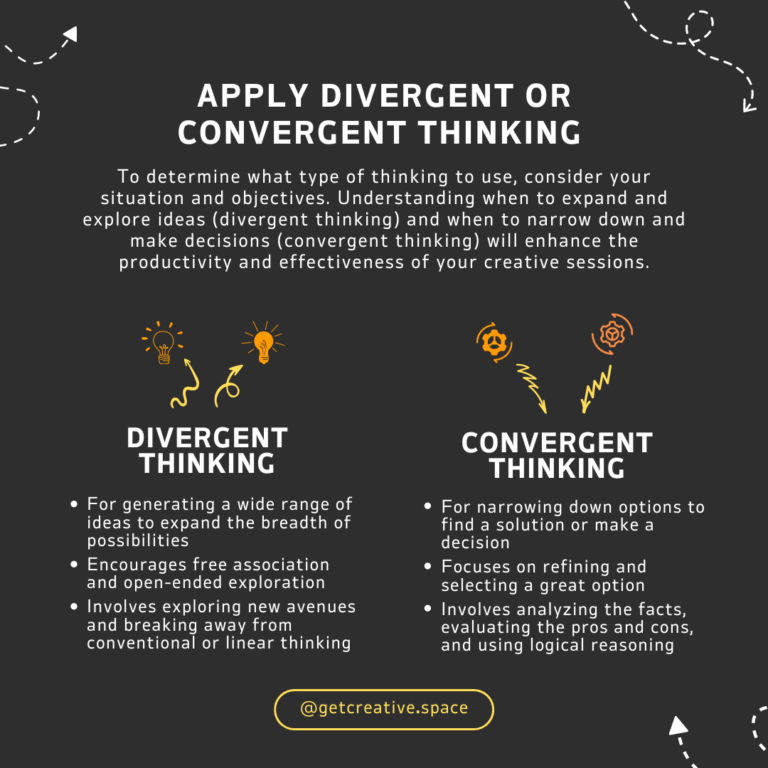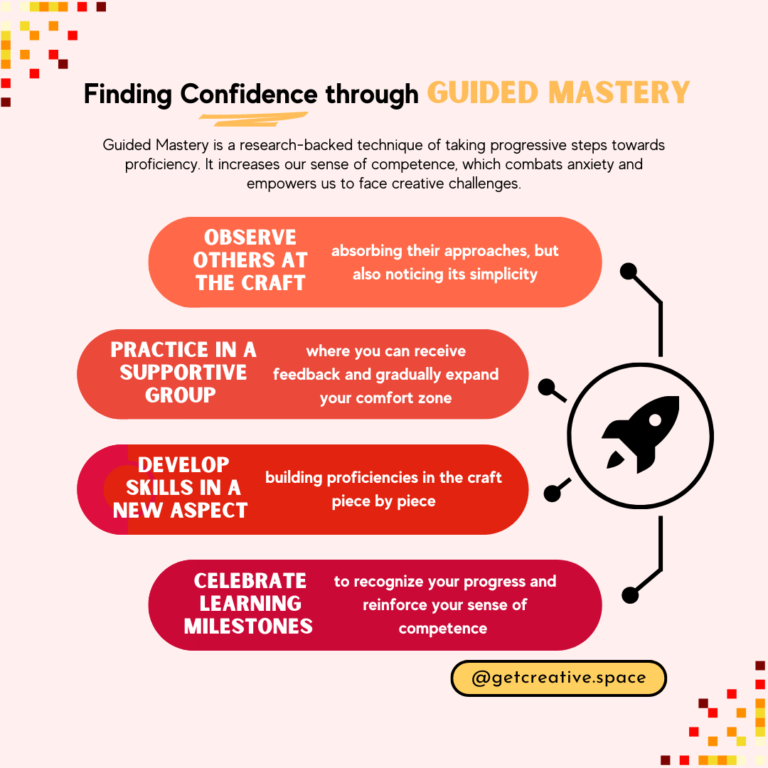Movements and Postures, Metaphorically Speaking
Movement and postures can provoke expansive thinking. This concept is rooted in the idea of “embodied metaphors:” pantomimes of common phrases which can actualize a creative mental state. Research studies1 have found that these physical activities or body postures actually influence how we think. Like striking the famous “Superman pose” to spark confidence before a meeting, you can tap into creativity or persistence by acting out associated metaphors.
- Walking: Several studies reveal that walking, particularly free-walking, enhances divergent thinking — the ability to generate creative ideas by exploring many possible solutions. One study found that participants who walked freely outside a box gained an advantage in creative tasks compared to those who sat inside the box. However, for convergent thinking tasks — when trying to recall various information from memory to derive a correct or suitable solution — walking could reduce your performance.
- Gestures: Using different hand and arm movements can influence dynamism. Performing fluid arm movements like tracing a zigzag line, in the style of “thinking fluidly,” can improve divergent thinking and the ability to make connections between remote concepts. Switching hands during tasks to prompt thinking “on the other hand” stimulates ideational fluency, the capacity to generate novel ideas. During assessments to test “squeezing your head,” squeezing a soft ball improved divergent thinking while squeezing a hard ball benefited convergent thinking. Stacking or moving items together like the metaphor of “putting two and two together” also aided convergent thinking.
- Posture: Studies have shown that adopting an “open” physical stance with legs slightly spread and hands resting on legs, can boost our openness to ideas. Compared to a contractive posture of closed legs and crossed arms, the open posture resulted in higher scores for fluency, flexibility, and originality during divergent thinking tasks. Interestingly, in a study that combined video stimuli to test the combination of posture and emotional state, holding a closed stance and negative emotions boosted higher persistence. For participants, this might have embodied the intensity of pursuit, like “finding a needle in a haystack.”
- Virtual Reality: These metaphors also worked in virtual or video game settings. When study participants’ avatars engaged in free-walking, they could come up with more original responses than if they moved in rectangular patterns. Even “breaking walls” with a game controller benefited ideational originality, fluency, flexibility, and persistence.
Novel movements can also become their own analogies. Anecdotes abound about moments of insight being immediately preceded by embodied, sensorimotor experiences. For instance, Philo Farnsworth, while tilling his family’s farm in straight, parallel lines, realized he could use the same principle to “paint” an image, line by line, on a screen. This idea eventually led to the first working television system. George de Mestral, a Swiss engineer, was inspired while picking burrs off his dog’s fur during a hike. The burrs, with their hundreds of “hooks” that could cling to anything “loop” like, provided the foundation for Velcro.
In our ever-evolving quest to optimize creativity, the power of embodied metaphors and physical movement provides an intriguing pathway to engage and expand our minds. Our bodies and their interactions with the world around us can catalyze our most groundbreaking ideas. So next time you’re seeking a flash of inspiration, remember to move, pose, and play—your next Eureka moment might just be a walk or a gesture away.
- See this paper for a compilation of the research studies mentioned: Malinin, L. H. (2018). How Radical Is Embodied Creativity? Implications of 4E Approaches for Creativity Research and Teaching. Frontiers in Psychology, 10. https://doi.org/10.3389/fpsyg.2019.02372

